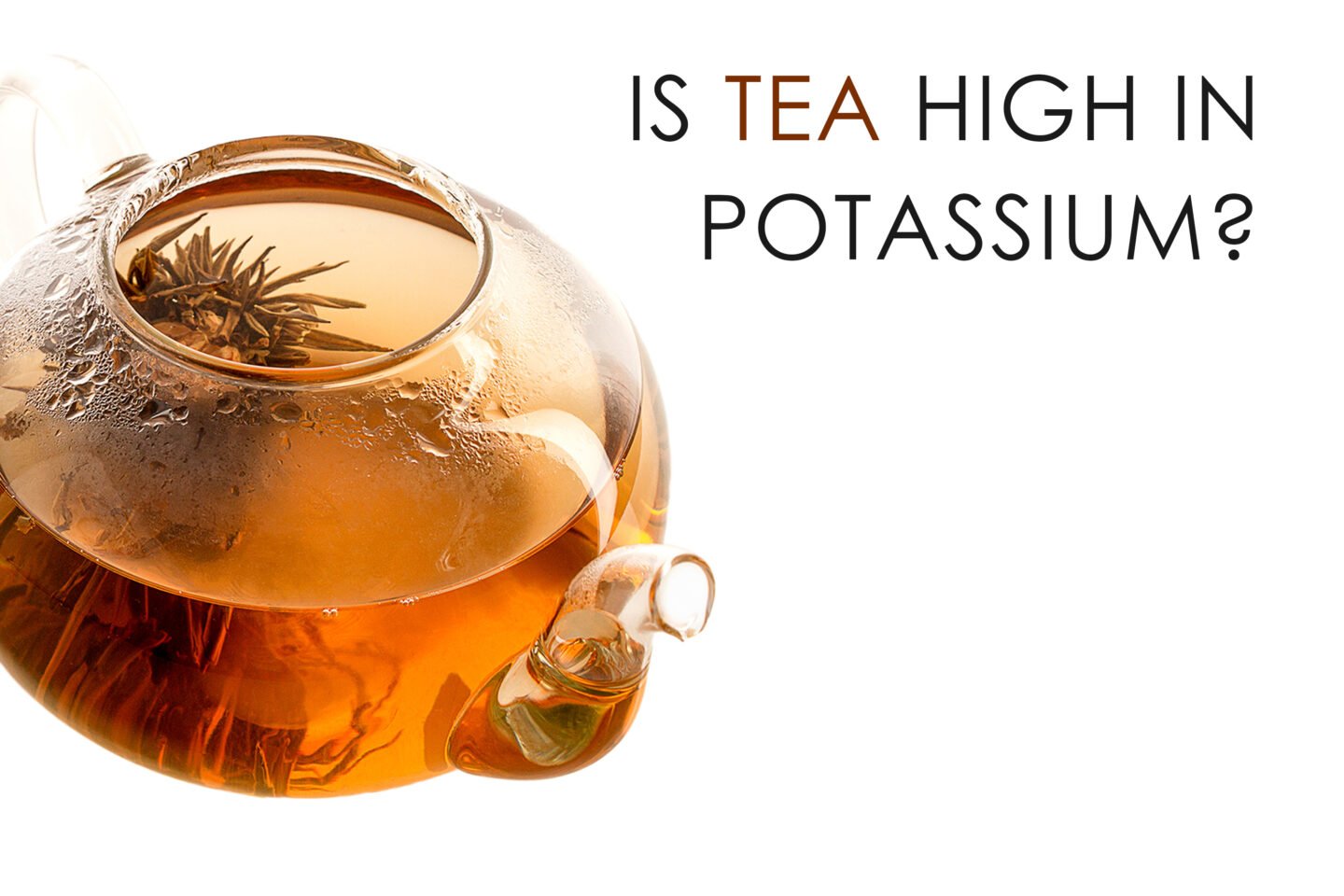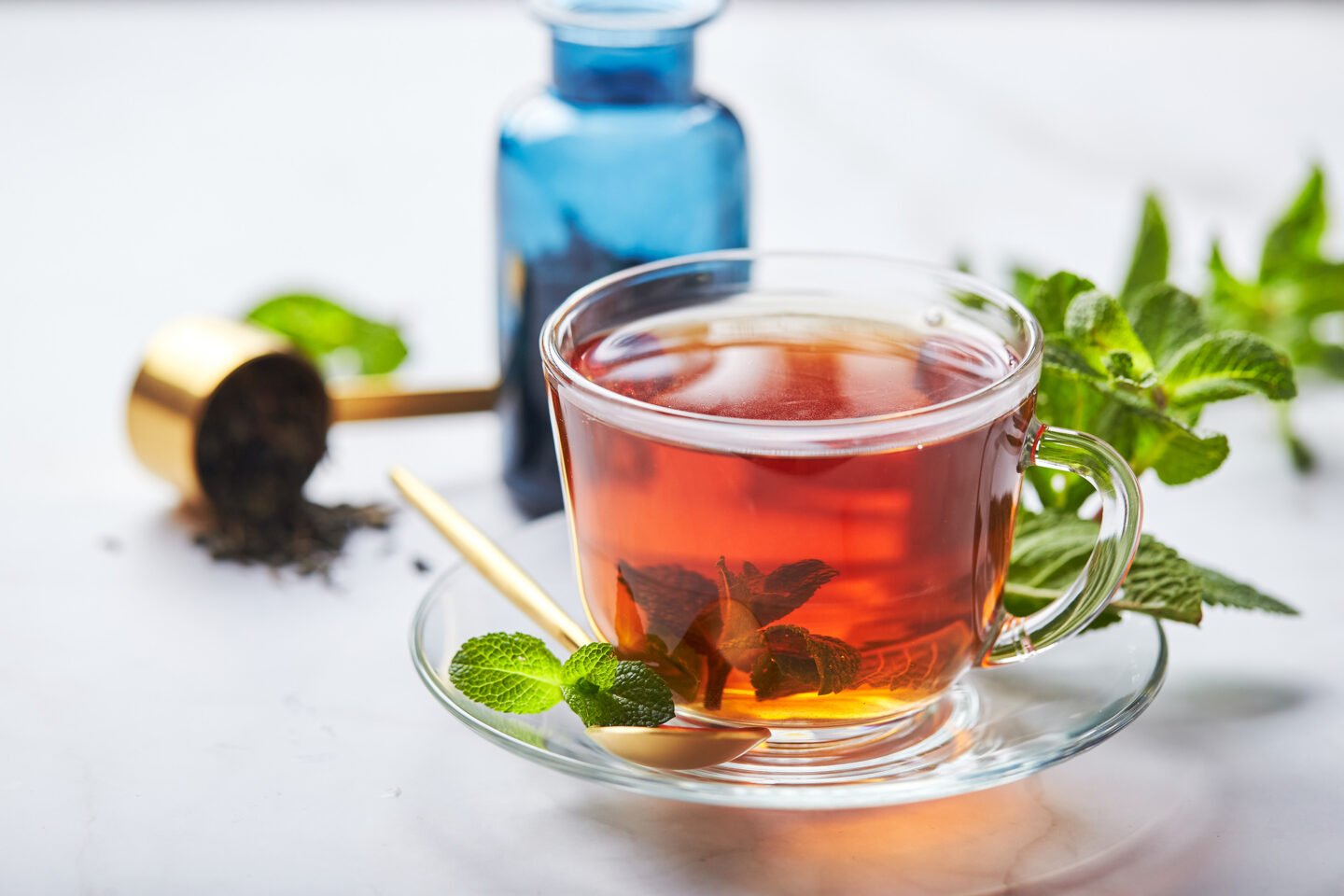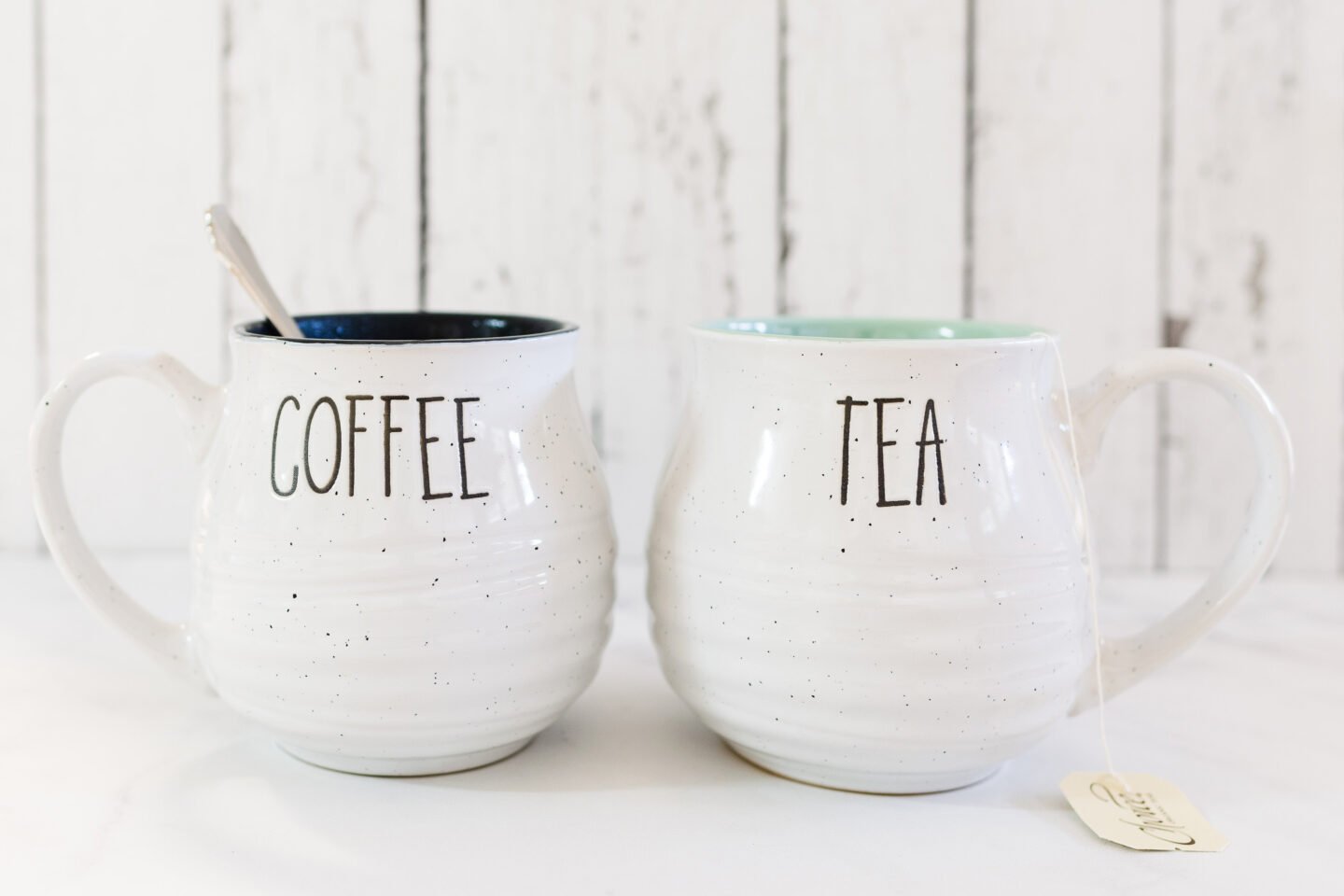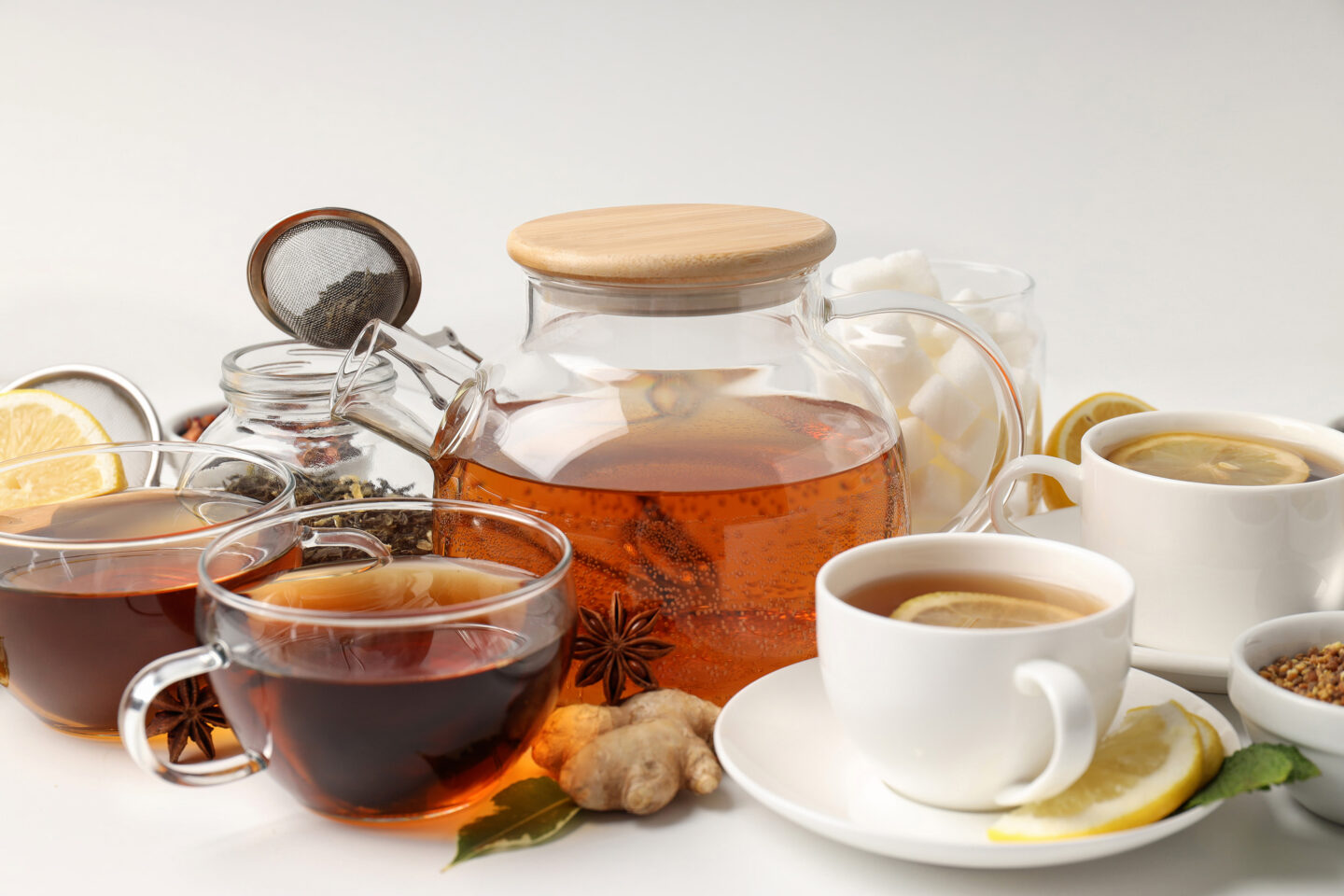Potassium is essential for the normal function of cells; it regulates the heartbeat, supports muscle and nerve function, and aids carbohydrate metabolism. Everyone needs some potassium in their diet, and many don't get enough, putting themselves at risk of developing a deficiency, symptoms of which include muscle cramps and arrhythmia.

Conversely, people with kidney disease may follow a diet low in potassium, as their kidneys cannot remove the excess like those of healthy people. These people must know the potassium content of common foods and drinks and stay within the daily limit their doctor recommends.
Can people on such a diet safely enjoy a cup or two of tea?
Table of Contents
- Is Tea High or Low in Potassium?
- How Much Potassium Is in Tea?
- Is Tea Good for You?
- Which Has More Potassium, Tea or Coffee?
- Can You Get Too Much Potassium from Tea?
- Can You Drink Tea on a Low-potassium Diet?
- Which Hot Drinks Are Low in Potassium?
- Which Hot Drinks Are High in Potassium?
- Frequently Asked Questions
Is Tea High or Low in Potassium?
Tea is low in potassium and safe for most on a low-potassium diet.
Can You Check Your Potassium Level at Home?
How Much Potassium Is in Tea?
A healthy adult's recommended daily potassium intake is 3,500–4,700 mg, while for those on a low-potassium diet, it's usually between 2,000 and 3,000 mg.
The potassium content of tea varies with variety, with 8 oz (236 ml) of black tea containing 88 mg (less than 2% of the recommended daily intake), green tea 20 mg, and herbal tea around 21 mg.
Is Tea Good for You?

Below, I've listed some of the many benefits of tea.
Contains less caffeine
Tea contains much less caffeine than coffee, and herbal teas contain none. Drinking green tea is a great alternative for those who experience headaches, insomnia, and nervousness after drinking coffee.
Contains flavonoids
Teas are all made from Camellia sinensis, a plant native to India and China that contains antioxidants called flavonoids.
Green tea contains the most flavonoids, which fight free radicals in our bodies, reducing the risk of clogged arteries, heart disease, and cancer.
Boosts fat burning
Studies show that green tea has a thermogenic effect that can boost your metabolism and improve fat burning.
Which Has More Potassium, Tea or Coffee?

Tea and coffee have similar potassium contents, with a cup of coffee containing between 34 and 150 mg and tea between 20 and 90 mg.
Can You Get Too Much Potassium from Tea?
It would be almost impossible to get too much potassium from drinking tea. However, black tea contains the most at 88 mg per cup, and those on a low-potassium diet should never exceed their daily limit.
Can You Drink Tea on a Low-potassium Diet?
Green and herbal teas are generally safe for those on a low-potassium diet. However, if you are on a low-potassium diet due to kidney problems, you should limit your tea consumption as it contains oxalate, which can lead to kidney stone formation.
Loose black tea has the highest oxalate content. If you are on a low-oxalate diet, you should only consume up to three cups of loose black tea to avoid kidney stone formation.
Which Hot Drinks Are Low in Potassium?

Tea and coffee are the best hot drinks for those on a low-potassium diet.
Which Hot Drinks Are High in Potassium?
Hot chocolate contains almost 500 mg of potassium per cup, and 2% milk has around 350 mg.
Frequently Asked Questions
Black tea contains a moderate amount of potassium, with 88 mg per 8-oz cup.
A cup of green tea contains only 20 mg of potassium.
Herbal tea, such as chamomile, contains around 22 mg of potassium per cup.
A cup of Nestea contains around 46 mg of potassium.
Snapple's diet lemon-flavored and peach-flavored teas have 90 mg of potassium per 16 fl oz, around 2% of the recommended daily intake for adults. Snapple Apple has around 60 mg.
Don't know which foods are high in potassium? Read our article, 15 Best Food Sources of Potassium. We also have a guide to this important mineral: Potassium 101: All You Need To Know About Potassium.
